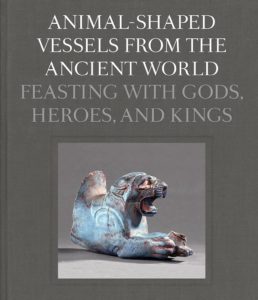
At long last I have in my hands Animal-Shaped Vessels from the Ancient World: Feasting with Gods, Heroes, and Kings, edited by Susanne Ebbinghaus (Harvard Art Museums, 2018). It features my essay “From the Mediterranean to China — After Alexander,” which discusses Parthian, Sasanian, Sogdian, Gandharan, Tibetan and even Chinese rhyta and other vessels. It also includes Susanne’s essay “Emblematic Animals at Iron Age Feasts,” to which I contributed a discussion of pitchers, with examples from Kush, Iran, Cyprus, and Etruria.
Susanne has been studying rhyta and other zoomorphic vessels since the 1990s, and this book, along with the exhibition of course, represents the culmination of decades of work. While I’m certain she has more to say on the subject, this book is the authoritative statement on vessels of this sort, and I am honored to have contributed to it.
